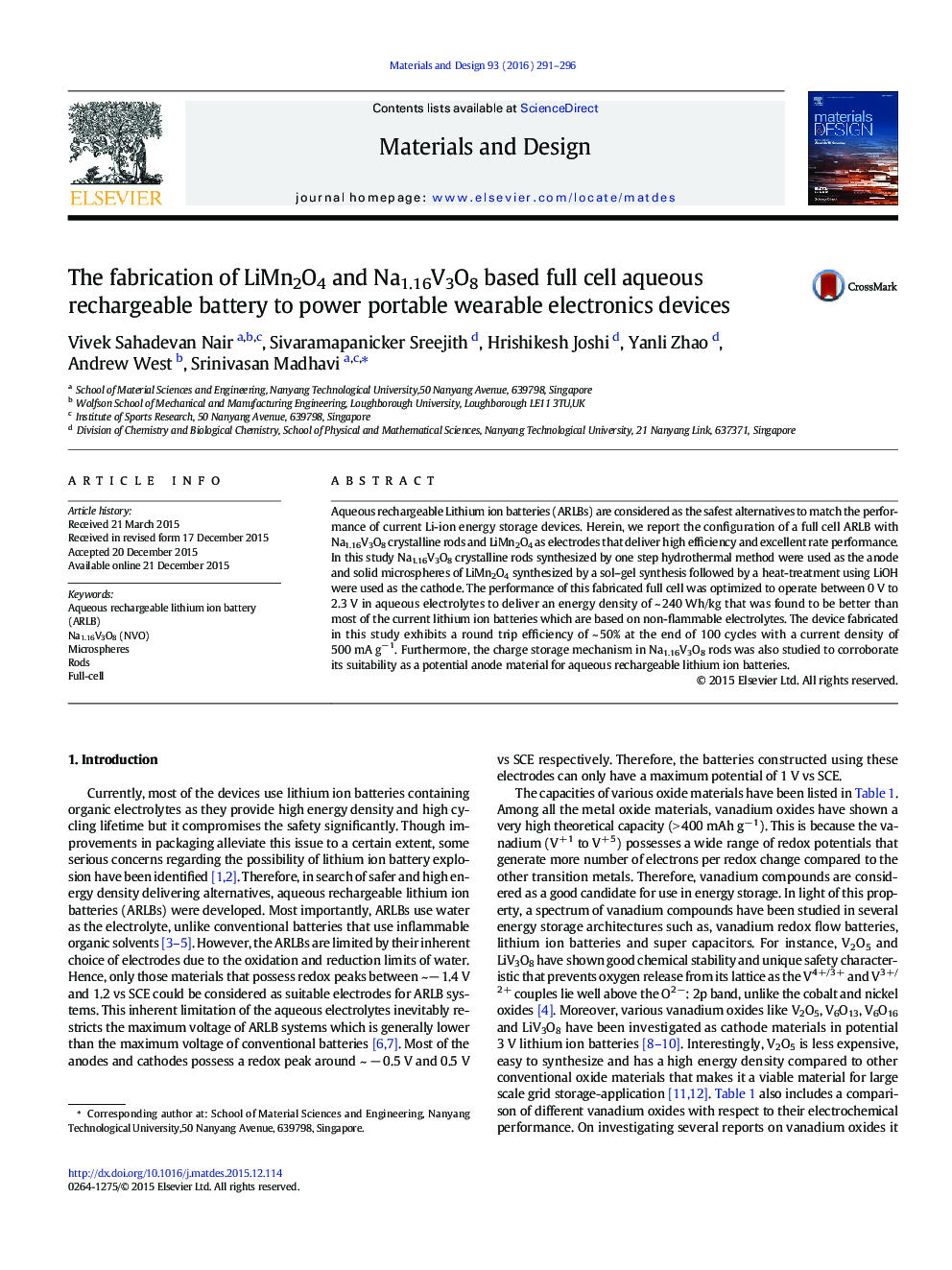| Article ID | Journal | Published Year | Pages | File Type |
|---|---|---|---|---|
| 828184 | Materials & Design | 2016 | 6 Pages |
•A cost effective aqueous rechargeable battery for application in wearable electronics•A unique belt like morphology of the anode material to enhance the electrochemical performance of the device•A high specific capacity (~ 240 Whg− 1) with round trip efficiency of > 50% after 100 cycles
Aqueous rechargeable Lithium ion batteries (ARLBs) are considered as the safest alternatives to match the performance of current Li-ion energy storage devices. Herein, we report the configuration of a full cell ARLB with Na1.16V3O8 crystalline rods and LiMn2O4 as electrodes that deliver high efficiency and excellent rate performance. In this study Na1.16V3O8 crystalline rods synthesized by one step hydrothermal method were used as the anode and solid microspheres of LiMn2O4 synthesized by a sol–gel synthesis followed by a heat-treatment using LiOH were used as the cathode. The performance of this fabricated full cell was optimized to operate between 0 V to 2.3 V in aqueous electrolytes to deliver an energy density of ~ 240 Wh/kg that was found to be better than most of the current lithium ion batteries which are based on non-flammable electrolytes. The device fabricated in this study exhibits a round trip efficiency of ~ 50% at the end of 100 cycles with a current density of 500 mA g− 1. Furthermore, the charge storage mechanism in Na1.16V3O8 rods was also studied to corroborate its suitability as a potential anode material for aqueous rechargeable lithium ion batteries.
Graphical abstractFigure optionsDownload full-size imageDownload as PowerPoint slide
